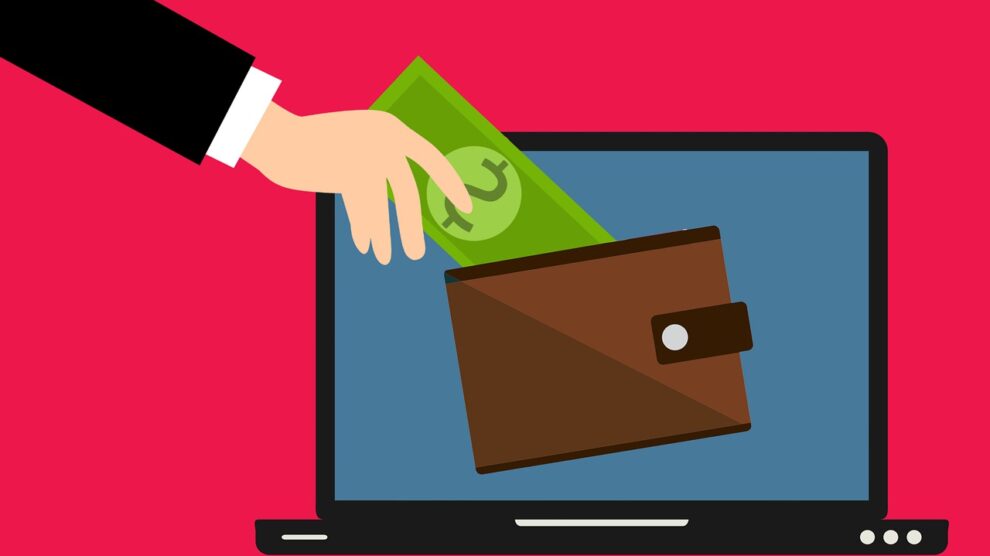According to PayPal, 58% of freelancers aren’t getting paid on time in four major Asian countries. What’s the point of all your hard work if you don’t get the payment you deserve? Here are the 10 best payment options for freelancers in 2021. These methods will make it easier for you to collect your payment and your client to pay you on time.
1. Payoneer
Payoneer is one of the oldest payment methods among freelancers. It lets you receive and make online payments in just a click. You can also track your account balance and entire payment history.
Benefits of Payoneer:
- Cross-border payment service– Managing a Payoneer account is like managing your bank account. It allows smooth and easy payment transactions thereby promoting better earning along with less operational costs. You can also receive payments in different currencies like the Japanese Yen, Chinese Yuan and the Australian Dollar.
- Fast and Seamless Billing– You can also provide accurate billing statements to your clients the moment you receive their payment.
- Fully integrated solutions– This platform is integrated with expansive corporations and networks all over the globe. This ensures easy sending of funds to your partners and employees (if you have any.)
2. Quickbooks Online
Let’s assume you have provided assignment help services to 30 people in a month. Wouldn’t it be difficult to create invoices and send the invoice to each client? It’s manageable when you are working with fewer clients. But, you need a robust payment method when you are managing more than 5 clients. Quickbooks Online helps you eliminate unnecessary paperwork and send invoices quickly.
Benefits of Quickbooks Online:
- Consolidated customer data– It saves innumerable details of your clients in an organised order.
- Track sales and expenses– It helps you get the hang of your cash flow and how your freelancing is doing.
- Easily creates and manages invoices– It helps you design and create professional invoices and then send them via email automatically.
Though mainly an accounting software, Quickbooks Online is also effective when it comes to invoicing, inventory, payroll and reporting. This software puts you in charge of your finances, your time and your freelancing business.
3. Cash App
Cash App is a P2P or a peer-to-peer payment service owned by Square Inc., a leader in the financial technology industry. This payment method makes money by charging individual users a specific transaction fee to access additional services and businesses to use their application. You just need your mobile devices to make your payments successfully through Square Cash or Square Cash App.
How does Cash App work?
- There are two primary functions of Cash App- paying your partners or employees and getting paid by your clients.
- You can start any of the functions by simply tapping on the dollar sign ‘$’ at the end of the app.
- Then add the amount in question and tap ‘Pay’ or ‘Request’ as per your situation.
- Finally, enter the other party’s registered phone number or email ID and send or request money as required.
Unlike other payment methods, Cash App offers a free Visa-certified debit card, also known as a Cash Card that users can request. You can use this debit card at standard brick and mortar ATMs and retail locations to withdraw cash. This platform processes your payment within 1-3 business days.
4. Google Pay
Google Pay lets you send and receive any number of payments without charging any extra bucks. You can use this payment method on both mobile devices and desktops. In case of receiving the payments, your clients have to enter your email address or phone number to send you the money. You have to download this app on your mobile device, create an account and set a PIN number to manage all transactions.
Features of Google Pay:
- Send and receive money via audio– The audio-based QR system lets you send and receive money only by scanning the QR code appearing on your screen.
- Pay utility bills– Besides sending and receiving payment, you can also pay your utility bills such as gas, electricity, water, property tax, etc.
- Multiple payment options– You can make or receive payments through QR code scanning, UPI name or your bank details and IFSC code.
Google Pay processes payments in 10 business days or less. There are no fees charged for debit cards and bank transfers. However, a 2.9% fee is charged for payments via credit cards. This app is available in over 30 countries, including the United States, Australia, the United Kingdom, etc.
5. Skrill (Moneybookers)
An online payment processor that lets you make international money transfers at a low cost. This method takes up to three days to process your payment successfully and another 24 hours to transfer the payment to your account. Skrill is available all over the world except for a few countries mentioned in this list. The transfer limit is between $135 and $25,000 a month based on whether your account is verified or not.
Benefits of Skrill:
- Simple– With Skrill, making and receiving payments is a very simple task. You can receive payments via credit cards end emails.
- Secured– This payment method provides the highest level of transparency and security for each transaction that the system handles. It keeps all your passwords and other critical information strictly confidential.
- Accessible– All you have to do to use this payment method is open an account and everything else follows. You can make the transactions, or your clients can pay you even from their mobile devices.
In modern freelancing business, you have to facilitate your customers, especially when it comes to money transfers and payment processing. The best thing about this is you can use Skrill either for free or for a low price for distinct types of transactions. However, you won’t be charged anything as long as you are consistently logged in and make at least one transaction a year.
6. ACH freelance payments
Let’s say you work for an employer who sends you ACH money transfers directly to your bank account. ACH is Automated Clearing House and is very popular for bank transfers. Basically, your payment is transferred electronically from one bank to another in batches. Usually, your clients (the sender) are charged a nominal fee for remitting funds via ACH. The fee ranges anywhere from $0.50 to $10 per transaction depending on your bank rules.
Pros of ACH:
The best thing about ACH transactions is they are almost free to receive. You can keep all of your payouts through ACH, especially if you aren’t in a hurry.
Cons of ACH:
- ACH can take two to three business days to complete your transactions. ACH transfers are done in batches. So, there’s usually some long waiting time between your payment and the release of funds.
- ACH transactions are limited to the US only. So, you need to have a proper bank account in the US to be eligible for ACH transfer.
You needn’t have to worry about paying fees when you use ACH to make or collect payments. The fees only have to be paid by your clients and that’s fine.
7. PayPal
With over 270 million users, PayPal is one of the most popular digital payment methods. It is a breeze to make or receive payments via PayPal. All you have to do is create an account on the official PayPal website and connect your credit or debit card details. Your clients can pay you via their own accounts so that you can withdraw the money from your PayPal balance as and when required.
Overview of PayPal features:
- PCI compliance
- Barcode scanning
- Accept payments online
- Express Checkout
- Inventory tracking
- Mobile card reader
- Virtual terminal
- Online invoicing
- Credit card reader
The biggest con for PayPal is its fees. The fee for receiving payments is 2.9% along with 0.30 USD. That means, if you have billed a client $1000, then you will have to pay $29.30 to PayPal. You may also have to pay a currency conversion rate of 2.5% if you are based outside of the United States.
8. Transferwise payment options
Do you reside in London and are you interested in a bank transfer service? Then Transferwise is the ideal choice for you. You will receive payments directly into your account once your client pays you. This is especially helpful if you do business with clients in another country with multiple currency conversions. This payment method is very cost-effective if you conduct your freelancing business in Europe.
You can get money transferred into your account within 12 hours for a Swift transfer and 36 hours for a bank transfer. However, you may be charged a fee depending on your bank if you are a non-US based freelancer. The fee also depends on the rate you have billed your client.
9. Paper check payments
Paper checks have been the staple of business payments all over the world, but that is changing due to the advent of online payments and e-checks. Unlike the problem with cash, your clients can just mail you checks which you can hand over to your bank at your convenience. There’s still a risk, however, of the check being stolen, damaged or lost. Additionally, your client may also run the risk of losing his/her personal information.
Though it has several risks, you should still make this option available to your clients because a number of big companies still prefer to make payments by check. You could land bigger, better clients if you accept this form of payment. Another problem with checks is that they may bounce, resulting in unnecessary trips to the bank.
10. Venmo
Venmo is a digital wallet that is owned by PayPal. It lets you transfer funds via a Venmo app or online. You will also find a feed that resembles regular social media notifications and allows you to comment on your transactions so your clients can see the status of payments. Venmo processing time ranges from instant to up to three business days.
What are the fees charged on Venmo?
- Fees on withdrawls range between $0.25 and $10. Your client will be charged 1% of the transferred amount in case of the instant transfer option.
- You will be charged a 3% fee every time you fund your account on Venmo.
- Certain Mastercards or Visa debit cards facilitate for a faster and 30-minute cash-out. However, these cost $0.25 per transfer. Aside from these cards, bank transfers are free but take longer to process.
Wrapping Up
Freelancing is the future among Millennials. It helps you become your own boss without having to stay confined to some imaginary hierarchy or strict working hours. However, that doesn’t mean you have to work any less hard. And, the worst part is having payment troubles after working your heart out. So, try integrating the payment options outlined above to make the overall process both convenient and smooth for yourself and your clients.





